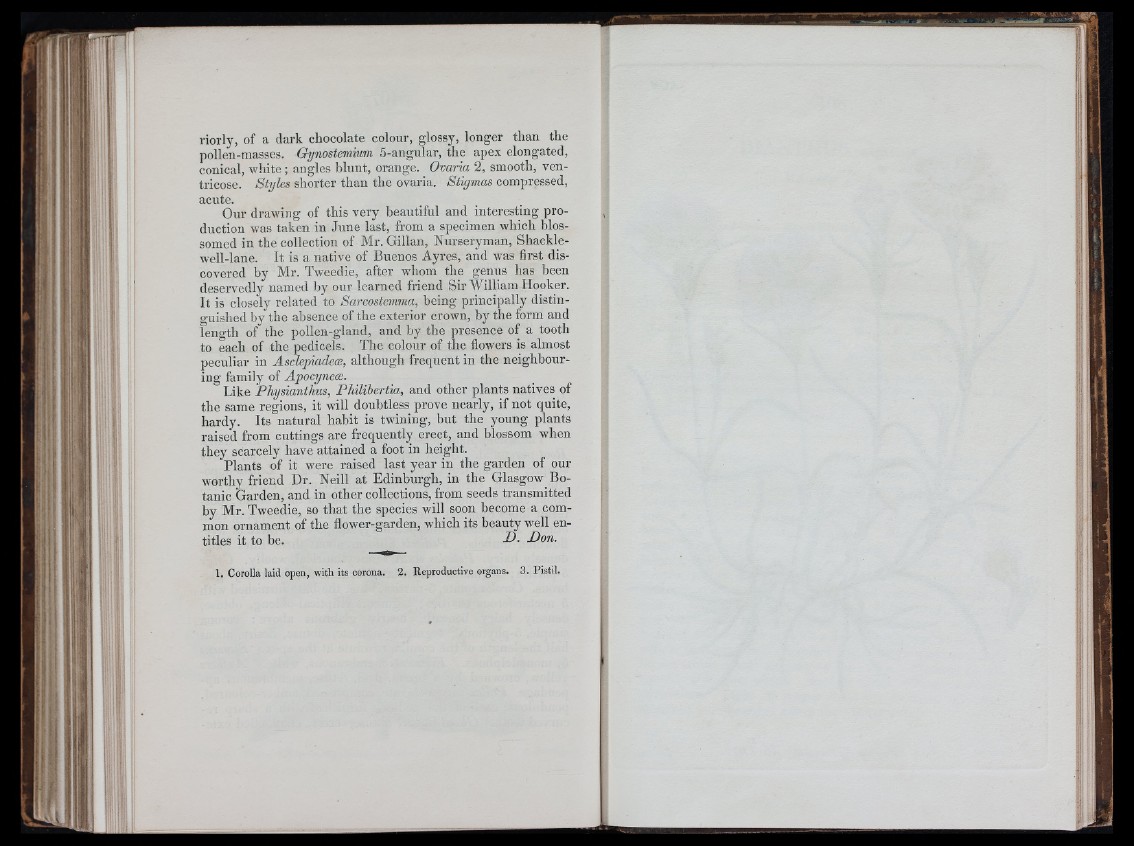
riorly, of a dark chocolate colour, glossy, longer than the
pollen-masses. Gynostemium 5-angular, the apex elongated,
conical, w h ite ; angles blunt, orange. Ovaria 2, smooth, ventricose.
Styles shorter than the ovaria. Stigmas compressed,
acute.
Our drawing of this very beautiful and interesting production
was taken in June last, from a specimen which blossomed
in the collection of Mr. Gillan, Nurseryman, Shackle-
well-lane. It is a native of Buenos Ayres, and was first discovered
by Mr. Tweedie, after whom the genus has been
deservedly named hy our learned friend Sir William Hooker.
It is closely related to Sarcostemma, being principally distinguished
by the absence of the exterior crown, by the form and
length of the pollen-gland, and by the presence of a tooth
to each of the pedicels. The colour of the flowers is almost
peculiar in Asclepiadece, although frequent in the neighbouring
family of Apoeynece.
Like Phjsianthus, Philibertia, and other plants natives of
the same regions, it will doubtless prove nearly, if not quite,
hardy. Its natural habit is twining, but the young plants
raised from cuttings are frequently erect, and blossom when
they scarcely have attained a foot in height.
Plants of it were raised last year in the garden of our
worthy friend Dr. Neill at Edinburgh, in the Glasgow_ Botanic
Garden, and in other collections, from seeds transmitted
by Mr. Tweeffie, so that the species will soon become a common
ornament of the flower-garden, which its beauty well entitles
it to be. 7D. Don. 11
1. Corolla laid open, with its corona. 2. Reproductive organs. 3. Pistil.
ifi